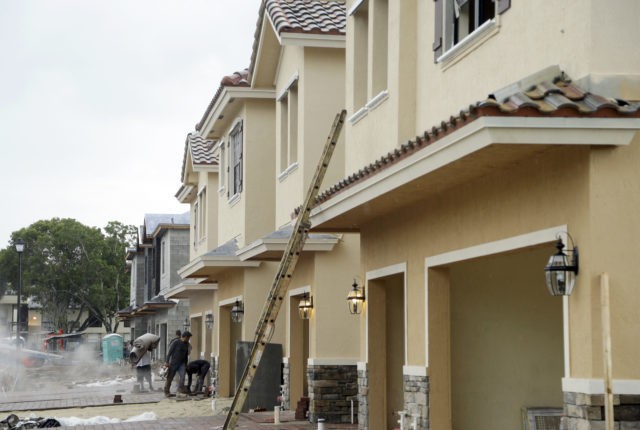A new study by the Real Estate Center at Texas A&M University finds that rising costs of land is contributing to higher home prices in the Lone Star State.
The researchers suggest that the influx of transplants from other states who come to the business-friendly Texas for its booming economy, lower cost of living, and good quality of life, create a heavier demand for homes, thus driving up land prices.
“Historically, Texas’ home prices have been comparatively low mainly because of the state’s abundant supply of low-cost land,” said Dr. James Gaines, chief economist for the Real Estate Center at Texas A&M University, in a prepared statement.
“In addition, the land-acquisition process — including costs of property titles, zoning requirements, covenants, deed restrictions, easements, right-of-way restrictions, surveying, and boundary markers — is efficient in Texas. Local platting and permitting have been quick and low cost, added Gaines, who co-authored Dirt Isn’t Cheap…Anymore.
Gaines pointed out that more affordable home prices have played a key role in the state’s economic growth. “They attract more people and businesses from other states and result in more demand for goods and services, higher economic growth rates, and more jobs. These combine to attract even more people.”
The report highlighted that Texas home prices continue to remain low when compared to residential real estate costs nationwide, but the rising cost of land means higher home prices. When land price growth outpaces home price growth, land costs account for a larger portion of overall home costs.
“Land accounted for 20.4 percent of the cost of a single-family Texas home in 2016, less than the nation’s 33.5 percent and less than the corresponding shares in the most populous states, namely California’s 61.1 percent, New York’s 31.2 percent, and Florida’s 31.4 percent,” said Dr. Ali Anari, the Real Estate Center research economist who co-authored the study.
At least, as far back as 2005, Texans enjoyed more affordable homes than most U.S. residents including those states with the largest populations, say the researchers. However, Texas median home prices started to trend upward from $106,000 in 2005 to $161,500 in 2016. That is lower than the corresponding nationwide median home prices of $167,500 to $205,000. Still, the price gap narrowed in recent years because of Texas’ higher price growth rates since 2007.
The study pointed out that since the Great Recession, the period from December 2007 to June 2009, growing market forces on the supply and demand sides of the state’s housing market contributed to rising home prices. In 2016, the median price of a home in Texas jumped to 78.8 percent of the nationwide median, compared to 61.6 percent in 2005.
Last year, Texas led the nation with the most economically-recovered cities since the Great Recession in a WalletHub report. Last week, U.S. Census Bureau figures showed Texas continued to dominate the list of the nation’s fastest growing cities and towns.
By city, the Real Estate Center found Dallas experienced the largest share of land as a percent of home cost, 29.4 percent. Houston followed at 25.1 percent, Fort Worth at 22.4 percent, and San Antonio at 15.2 percent.
Real Estate Center analysts also looked at related factors impacting home ownership affordability in separate study released last week. It indicated while the Texas housing market remains relatively affordable, developers prefer building larger, more expensive homes rather than more affordable starter homes because of high land values and constructions costs coupled with stringent financing.
This shift means more expensive homes get built, shutting out average and low income earners. This also results in fewer lower priced new homes on the market, making older, smaller, existing homes the only low-priced option for homebuyers. Additionally, more potential homebuyers wind up leasing houses.
In 2005, 33.1 percent of Americans and 35.3 percent of Texas leased homes. In 2016, these figures increased nationally to 36.9 percent and to 38.9 percent in Texas. This report recommended several fixes such as incomes catching up with home prices, building more entry-level housing, and returning more rental homes to the “for sale” market.
Follow Merrill Hope, a member of the original Breitbart Texas team, on Twitter.

COMMENTS
Please let us know if you're having issues with commenting.